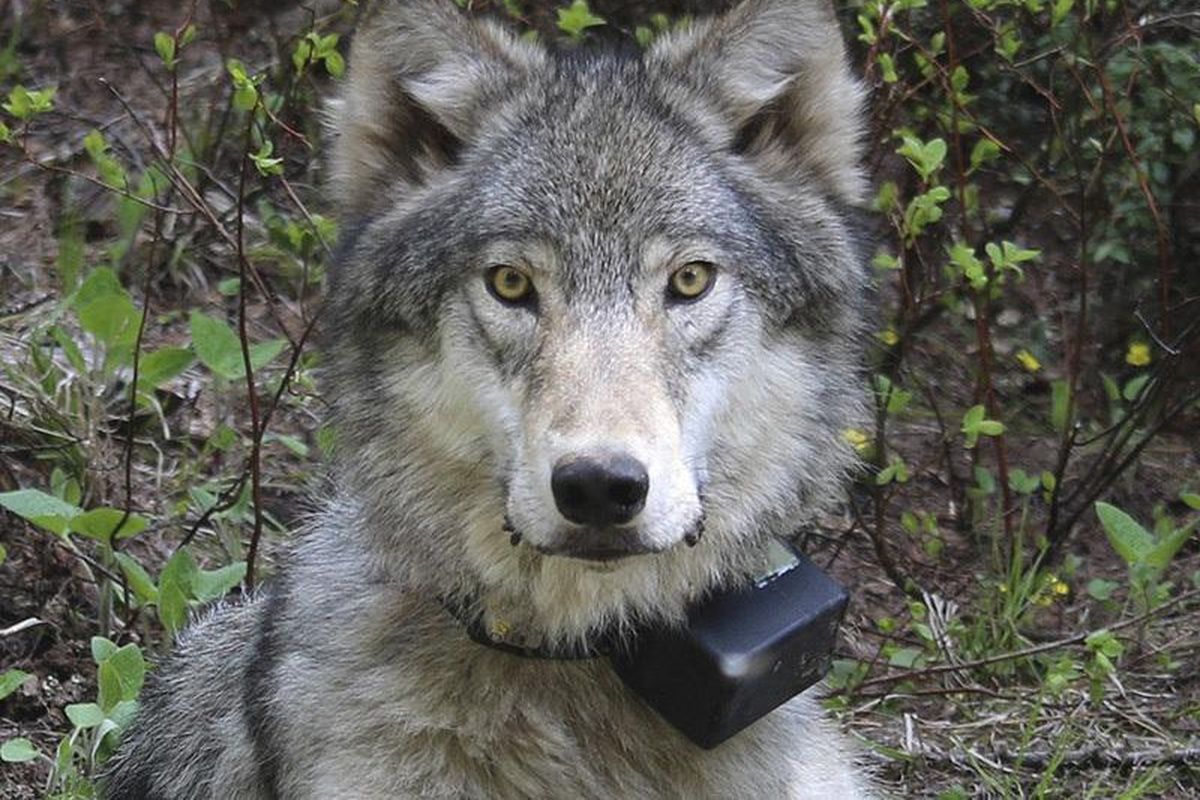Wolf kills in northeast Washington not prompting a kill order, for now

Another confirmed wolf kill in northeast Washington has left ranchers and wolf advocates wondering if, and when, wildlife officials will start killing members of the Togo pack.
As of yet Washington Department of Fish and Wildlife officials have made no decision, opting instead to gather more information about the pack which has been credited with five depredations in the last 10 months, including two in November 2017 and one in May.
WDFW’s lethal removal policy allows killing wolves if they prey on livestock three times in a 30-day period or four times in a 10-month period. That policy was developed in 2016 by WDFW and its 18-member Wolf Advisory Group, which represents the concerns of environmentalists, hunters and livestock ranchers.
The policy also stipulates that cattle producers have employed at least two proactive deterrence techniques.
The cow, killed Aug. 8, was grazing on a U.S. National Forest allotment near Danville, Washington.
The rancher was using nonlethal wolf deterrents including a fox light and range riders, according to a WDFW news release.
Additionally the rancher turned his cows out later in the season so the calves would be stronger and larger and the rancher removed sick or injured cattle.
New WDFW Director Kelly Susewind said he wants as much information as possible before making a decision, according to a news release.
Jay Shepherd, the wolf program lead for Conservation Northwest and one of the founders of the Northeast Washington Wolf-Cattle Collaborative said the rancher in question has been doing everything he can to prevent wolf depredations.
“He’s really been cooperative,” Shepherd said.
The rancher who lost a cow last week was the same rancher who experienced a depredation in the fall, Shepherd said.
Some wolf advocates aren’t sure the rancher is doing all he could.
“Fox lights are effective if you have your cattle penned,” said Chris Bachman the wildlife program director at the Spokane-based Lands Council. “You really can’t deploy a range rider and a fox light at the same time.”
In the past the Lands Council has questioned the use of national forest lands for cattle grazing, arguing that it makes it easier for wolves to attack cattle.
Bruce Botka, a spokesman for WDFW, clarified how the fox light was used in an email. The lights were used on the producers private pasture, not the grazing allotment, Botka said.
“We mentioned that because the tactic represented one of the two preventive measures he used before turning out his livestock,” he wrote. “After turnout, preventive measures have included the use of range riders and the removal of sick and injured cattle from the allotment.”
Shepherd supports the lethal removal of the offending wolves. However, because there is some question about whether or not the GPS collared wolf is a member of the Togo pack, he understands the delayed lethal removal decision.
In 2017, WDFW approved the killing of members of the Smackout pack after confirming four attacks on livestock.
The existence of the Togo pack was confirmed in late 2017. The pack was named in March. Two of the kills attributed to the Togo pack occurred in November before the Togo pack was confirmed by WDFW.
Others aren’t so patient.
“Everyone knows there are a lot more dead cows out there than the one confirmed,” said Rep. Joel Kretz, R-Wauconda. “It’s frustrating to watch your livelihood go down the drain.”
Kretz, a rancher himself, represents parts of north Spokane County as well as Pend Oreille, Stevens, Ferry counties and part of Okanogan County. Those counties contain most of Washington’s wolves.
“They’re pretty frustrated up here,” he said of ranchers in the area. “There are a lot of people working really closely together. But the system is failing them.”
Wolves were extirpated from Washington through shooting, trapping and poisoning by the 1930s. The gray wolf was federally listed as an endangered species in 1973. In 2008, Washington documented its first breeding wolf pack in roughly 70 years as the carnivores began naturally dispersing back into the state from Canada, Idaho and, later, Oregon.
Under state law, wolves are listed as an endangered species and are federally protected in the western two-thirds of the state.
Despite documented losses of roughly a dozen wolves a year from selective state-authorized lethal control, plus poaching, vehicle collisions and other human-related causes, Washington’s wolf population has steadily grown each year. A minimum of 122 wolves, 22 packs and 14 successful breeding pairs was reported by the WDFW this winter.
The growing wolf population, and the human-wolf conflicts that inevitably follow, is why Shepherd co-founded the Northeast Washington Wolf-Cattle Collaborative this year. Shepherd is working with rancher Arron Scotten. The hope is to find a collaborative way for ranchers and wolves to coexist.
The inaugural year of the collaboration has been a tough one with several cattle depredations and with wolves treeing a researcher in the Cascades.
“My fear is that people just say, ‘Oh yeah just another waste of money,’ ” he said. “It won’t work without giving it much of a chance. It’s going to take a few years.”
He added, “We’re just doing the best we can.”
Correction: Due to a reporter’s error the organization questioning the use of national forest land for cattle grazing was mistakenly identified. The Lands Council has questioned the practice. The story has been corrected.
Additionally, the number of depredations experienced by the rancher near Danville was incorrect. The rancher who lost a cow last week also experienced a depredation in the fall.